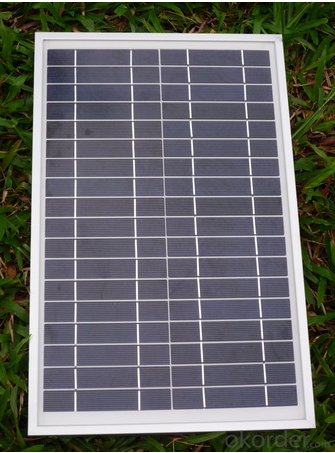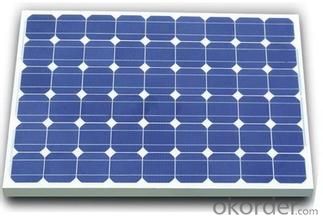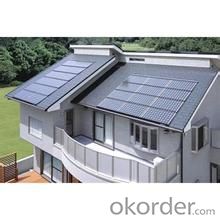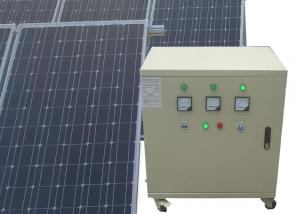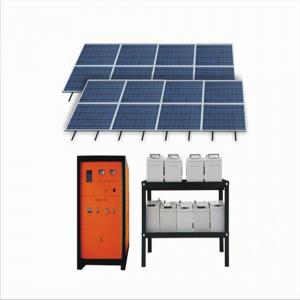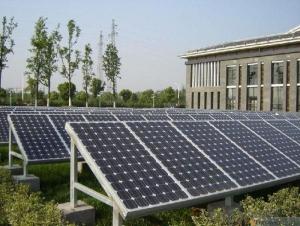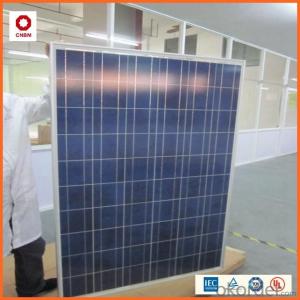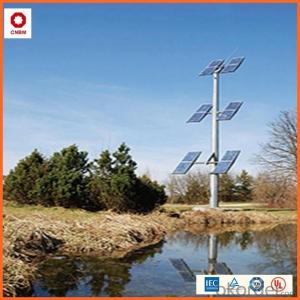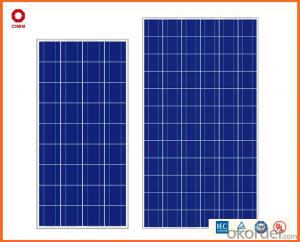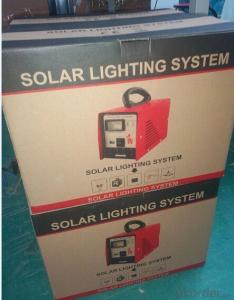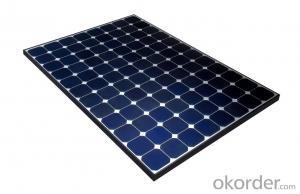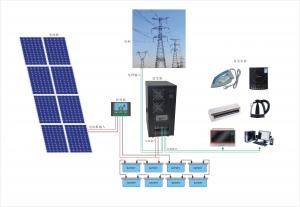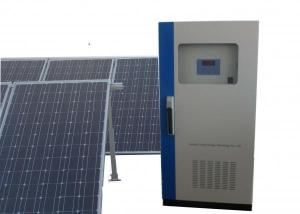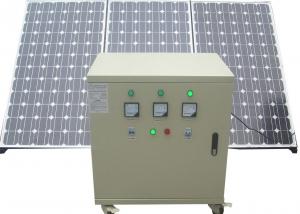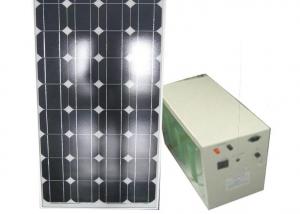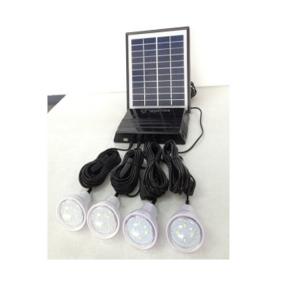1000W Solar Energy Systems Brooklyn Park - Approved by TUV UL CE
- Loading Port:
- Tianjin
- Payment Terms:
- TT OR LC
- Min Order Qty:
- 1 pc
- Supply Capability:
- 100 pc/month
OKorder Service Pledge
OKorder Financial Service
You Might Also Like
Specification
1000W Solar Home Solution Approved by TUV UL CE
Production description
PV array:
Convert sunlight instantly into DC electric power. Formed by the solar modules (also called photovoltaic
modules) in accordance with the system requirements for series and parallel.
Solar charge controller:
A charge controller may be used to power DC equipment with solar panels. The charge controller
provides a regulated DC output and stores excess energy in a battery as well as monitoring the battery
voltage to prevent over charge or over discharge. An inverter can be connected to the output of a charge
controller to drive AC loads.
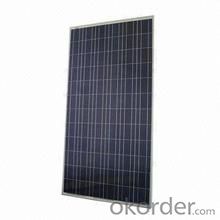
Feature
1.High conversion efficiencies resulting in superior power output performance.
2.Outstanding power output even in low light or high temperature conditions
3.Optimized design for ease of soldering and lamination
4.Long-term stability,reliability and performance
Physical characteristic
1. Rigorous quality control meets the highest international standards.
2. High-transmissivity low-iron tempered glass, strong aluminium frame.
3. Using UV-resistant silicon.
4. IS09001/14001/CE/TUV/UL
- Q: What is the difference between a solar tracker and a fixed-tilt solar energy system?
- A solar tracker is a system that follows the movement of the sun throughout the day, adjusting the position of solar panels to maximize sunlight exposure. On the other hand, a fixed-tilt solar energy system consists of solar panels that are mounted at a fixed angle, typically facing south, and do not move throughout the day. The main difference lies in their ability to track the sun's movement, resulting in increased energy production for solar trackers compared to fixed-tilt systems.
- Q: What is the impact of dust storms on solar panels?
- Dust storms can have a negative impact on solar panels as they can reduce the panels' efficiency by blocking sunlight and reducing the amount of energy they can generate. The accumulation of dust on the panels can also lead to overheating, which can further decrease their performance and potentially damage the panels if not cleaned regularly.
- Q: How does the installation process of a solar energy system work?
- The installation process of a solar energy system typically involves several steps. Firstly, the site is surveyed to evaluate its suitability for solar panels. Then, the necessary permits and paperwork are obtained. Next, the roof or ground-mounted solar panels are installed, along with the inverter and other equipment. Electrical connections are made, and the system is connected to the grid or battery storage. Finally, the system is tested and commissioned to ensure it is functioning properly.
- Q: What is the role of solar energy systems in reducing energy inequality?
- Solar energy systems play a crucial role in reducing energy inequality by providing access to affordable and sustainable energy sources for communities that are traditionally underserved or lack reliable access to electricity. One of the main advantages of solar energy systems is their scalability, which makes them suitable for both large-scale installations and small-scale community-based projects. This flexibility allows solar energy systems to be deployed in rural areas, where the grid infrastructure may be nonexistent or unreliable. By harnessing the power of the sun, these systems can provide electricity to homes, schools, and healthcare facilities, improving the quality of life for people in these communities and bridging the energy gap. Furthermore, solar energy systems can be installed on rooftops, reducing the need for additional land and minimizing the environmental impact. This is particularly important in urban areas where space is limited and traditional energy sources, such as coal or gas, may be more polluting and harmful to human health. Solar energy systems can help reduce air pollution and associated health issues, creating a cleaner and healthier environment for all. Another key aspect of solar energy systems is their potential for decentralized energy production. Instead of relying solely on large power plants located far away from communities, solar energy systems allow for distributed generation, meaning electricity can be produced and consumed locally. This decentralization empowers communities to take control of their energy production, reducing their dependence on centralized grids and often volatile energy prices. Solar energy systems also have the potential to create economic opportunities and reduce energy costs for marginalized communities. By investing in solar installations, communities can generate income through the sale of excess energy back to the grid, creating local jobs and promoting economic development. Additionally, solar energy systems can help lower energy bills for households, freeing up financial resources that can be allocated to other essential needs. In summary, solar energy systems play a critical role in reducing energy inequality by providing equitable access to affordable, sustainable, and clean energy sources. By addressing energy poverty and promoting self-sufficiency, solar energy systems contribute to a more inclusive and sustainable future for all.
- Q: How do solar energy systems handle excess energy production?
- Solar energy systems handle excess energy production in a few different ways. One common method is through net metering, where any excess energy that is produced by the solar system is fed back into the grid. This excess energy is then credited to the homeowner's account, effectively spinning their meter backward and reducing their energy bill. Another way to handle excess energy production is through the use of battery storage systems. These systems allow homeowners or businesses to store the excess energy generated by their solar panels for use during times of high energy demand or when the sun is not shining. The stored energy can be used during the evening or on cloudy days, maximizing the value and efficiency of the solar system. Additionally, some solar energy systems are designed to automatically shut down or reduce their output when excess energy is being produced. This is known as curtailment and is often used in large-scale solar farms or utility-scale installations. By reducing the output, the excess energy is not wasted and can be more effectively managed and distributed. Overall, solar energy systems have various mechanisms in place to handle excess energy production, whether it be through net metering, battery storage, or curtailment. These methods ensure that the surplus energy is not wasted and can be effectively utilized, making solar energy a highly efficient and sustainable source of power.
- Q: Can solar panels be installed on uneven or sloped surfaces?
- Yes, solar panels can be installed on uneven or sloped surfaces. However, the installation process may require additional components such as mounting brackets or frames to ensure the panels are securely attached and properly angled for optimal sunlight exposure.
- Q: Can solar energy systems be used for powering electric gates?
- Yes, solar energy systems can be used to power electric gates. Solar panels can generate electricity from sunlight, which can be used to operate electric gates. This renewable energy source is ideal for remote locations or areas with limited access to the power grid.
- Q: Can solar energy systems be used for emergency response operations?
- Yes, solar energy systems can be used for emergency response operations. Solar power provides a reliable and sustainable source of energy that can be used to power essential equipment and infrastructure during emergencies. It can be used to charge batteries, run communication systems, provide lighting, and power medical equipment in remote or disaster-stricken areas where there may be limited access to electricity. Solar energy systems are versatile, easy to deploy, and can help ensure the continuity of critical services during emergency situations.
- Q: Can a solar energy system power an entire household?
- Yes, a solar energy system has the potential to power an entire household. However, the feasibility of completely powering a household with solar energy depends on various factors such as the size of the system, energy consumption patterns, and location. It is essential to assess the energy needs of the household, consider the available sunlight, and design an appropriately sized solar system to ensure sufficient power generation. Additionally, incorporating energy-efficient practices and technologies can further enhance the ability of a solar energy system to meet the household's energy requirements.
- Q: How do solar energy systems contribute to reducing reliance on fossil fuels?
- Solar energy systems contribute to reducing reliance on fossil fuels by harnessing the power of the sun to generate electricity. Unlike fossil fuels, solar energy is a renewable resource that does not deplete over time. By utilizing solar panels to capture sunlight and convert it into usable energy, we can reduce the need for burning fossil fuels, which are not only finite but also contribute to air pollution and climate change. Switching to solar energy systems helps to decrease carbon emissions, mitigate the harmful effects of fossil fuel extraction and combustion, and promote a sustainable and cleaner energy future.
Send your message to us
1000W Solar Energy Systems Brooklyn Park - Approved by TUV UL CE
- Loading Port:
- Tianjin
- Payment Terms:
- TT OR LC
- Min Order Qty:
- 1 pc
- Supply Capability:
- 100 pc/month
OKorder Service Pledge
OKorder Financial Service
Similar products
Hot products
Hot Searches
Related keywords



